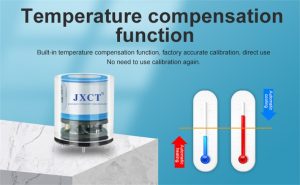Air pollution is a global environmental challenge that affects the health and well-being of millions of people. The World Health Organization estimates that around seven million premature deaths occur every year due to exposure to polluted air. To combat this issue, it is vital to monitor air quality effectively. Gas sensors, with their ability to detect and measure pollutants, hold significant potential in improving air quality. In this article, we will explore the various applications and advancements in gas sensor technology, as well as their role in addressing air pollution.

- Understanding Gas Sensors: Gas sensors are devices designed to detect and measure the concentration of specific gases in the surrounding environment. They function by converting the presence of target gases into an electrical signal, which can then be analyzed and interpreted. Gas sensors can detect a wide range of pollutants, including carbon monoxide, nitrogen dioxide, ozone, volatile organic compounds (VOCs), and particulate matter. By providing real-time data on pollutant levels, gas sensors enable informed decision-making and proactive measures to mitigate air pollution.
- Indoor Air Quality Monitoring: Indoor air quality is a significant concern as people spend a substantial amount of time indoors. Poor indoor air quality can lead to various health issues, including respiratory problems, allergies, and asthma. Gas sensors play a crucial role in monitoring indoor air quality by detecting harmful gases and pollutants such as carbon dioxide, formaldehyde, and VOCs. These sensors can be integrated into smart home systems, allowing homeowners to receive real-time updates on air quality and take appropriate actions such as adjusting ventilation or using air purifiers.
- Outdoor Air Quality Monitoring: Outdoor air pollution has detrimental effects on human health, ecosystems, and climate change. Gas sensors contribute significantly to outdoor air quality monitoring networks by accurately measuring concentrations of pollutants in the atmosphere. These sensors can be deployed in fixed monitoring stations or incorporated into mobile devices such as drones or vehicles for dynamic monitoring. By generating comprehensive and real-time data, gas sensors enable authorities to identify pollution hotspots, assess the effectiveness of pollution control measures, and develop targeted strategies for air quality improvement.
- Wearable Gas Sensors: Advancements in gas sensor technology have led to the development of wearable sensors that provide personal exposure information in real-time. These sensors can be integrated into wristbands, badges, or clothing, allowing individuals to monitor their immediate environment and make informed decisions regarding exposure to pollutants. Wearable gas sensors are particularly beneficial for workers in industrial settings, where they can detect hazardous gases and provide early warnings to prevent potential health risks. Additionally, these sensors can empower individuals to make lifestyle changes that reduce exposure to harmful pollutants.
- Internet of Things (IoT) Integration: Gas sensors are increasingly being integrated into IoT platforms, leading to the creation of smart air quality monitoring systems. IoT connectivity enables gas sensors to transmit data wirelessly to centralized databases, which can then be accessed by various stakeholders. This integration allows for real-time monitoring, data analysis, and visualization of air quality information. By leveraging IoT capabilities, decision-makers can proactively respond to changing air quality conditions, implement targeted interventions, and raise public awareness about air pollution.
- Advances in Sensor Technology: Advancements in sensor technology have significantly improved the performance and accuracy of gas sensors. New sensor materials, such as metal-oxide nanomaterials and carbon nanotubes, enhance sensitivity and selectivity to specific gases. Furthermore, miniaturization has made gas sensors smaller, more portable, and suitable for a wide range of applications. Sensor networks equipped with advanced algorithms and machine learning techniques can also provide more accurate measurements and real-time predictive analytics. These advancements increase the reliability and effectiveness of gas sensors in addressing air pollution challenges.
- Citizen Science and Community Engagement: Gas sensors have the potential to empower communities and engage citizens in air quality monitoring efforts. Citizen science initiatives encourage individuals to participate actively in data collection, analysis, and advocacy. By equipping communities with portable gas sensors, they can contribute valuable data to existing monitoring networks and raise awareness about local air pollution issues. Community-driven monitoring can complement official monitoring stations, provide localized information, and foster collaborative approaches to improving air quality.
Conclusion: Gas sensors are powerful tools i

n the fight against air pollution. With their ability to detect and measure pollutants, they provide crucial data for decision-making, policy development, and public awareness. As advancements in sensor technology continue and integration with IoT platforms expands, gas sensors will play an increasingly vital role in addressing air pollution challenges. By harnessing the potential of gas sensors, we can move towards a cleaner, healthier future with improved air quality for all.
 : +86 155 8830 2704
: +86 155 8830 2704 : jxdziot@gmail.com
: jxdziot@gmail.com
